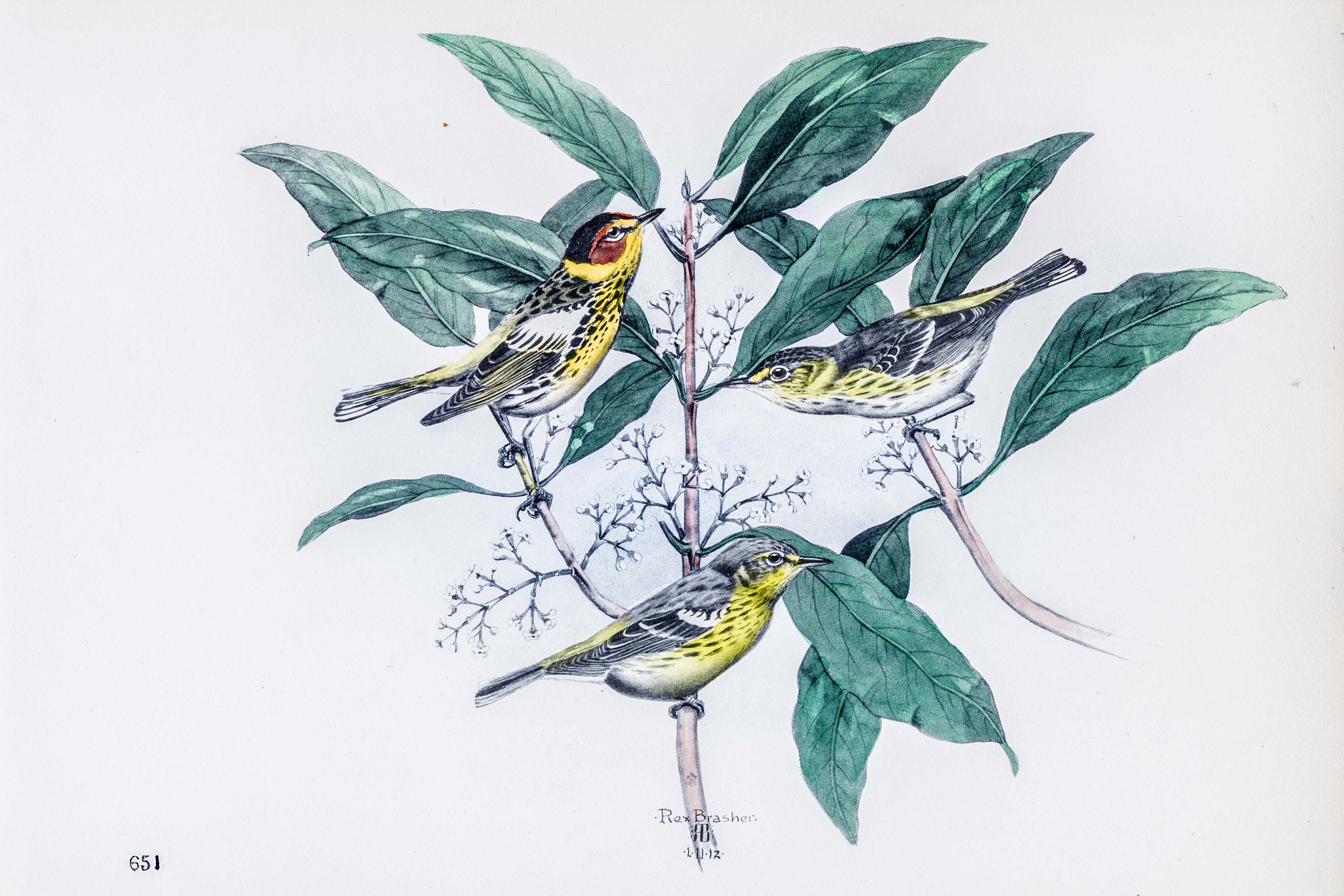
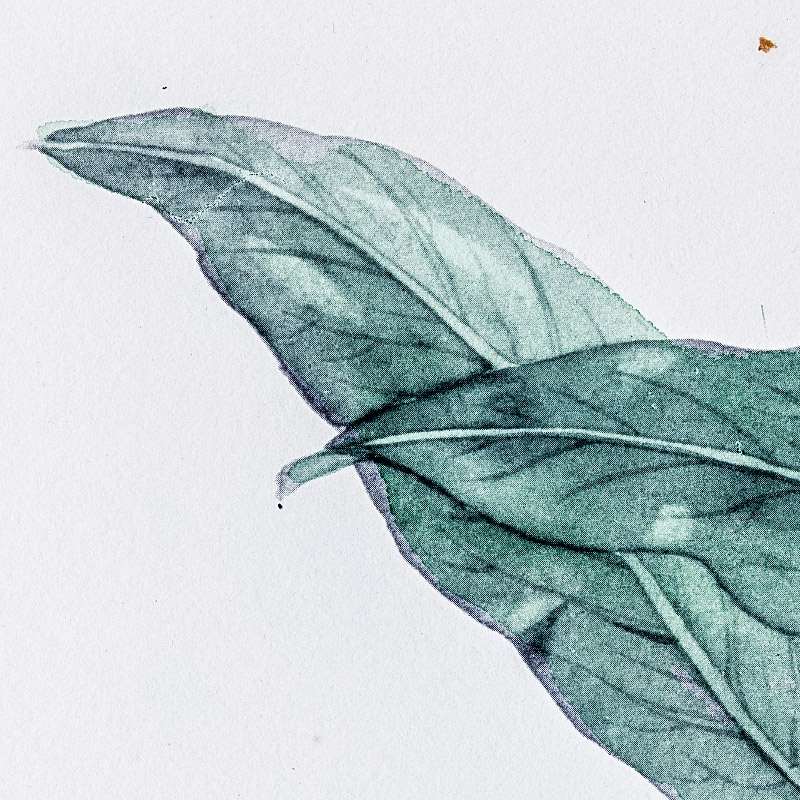
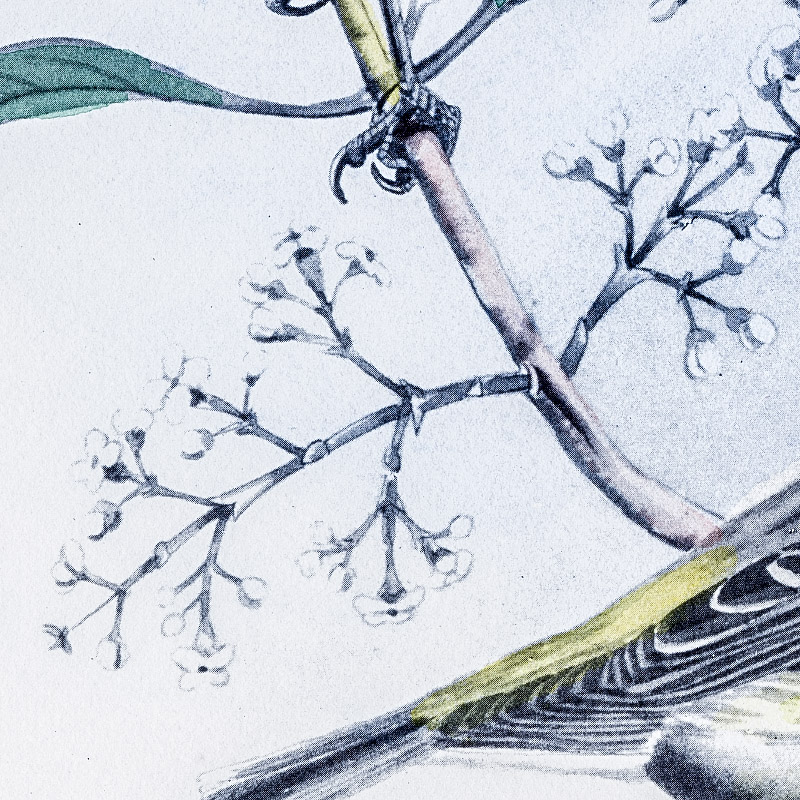
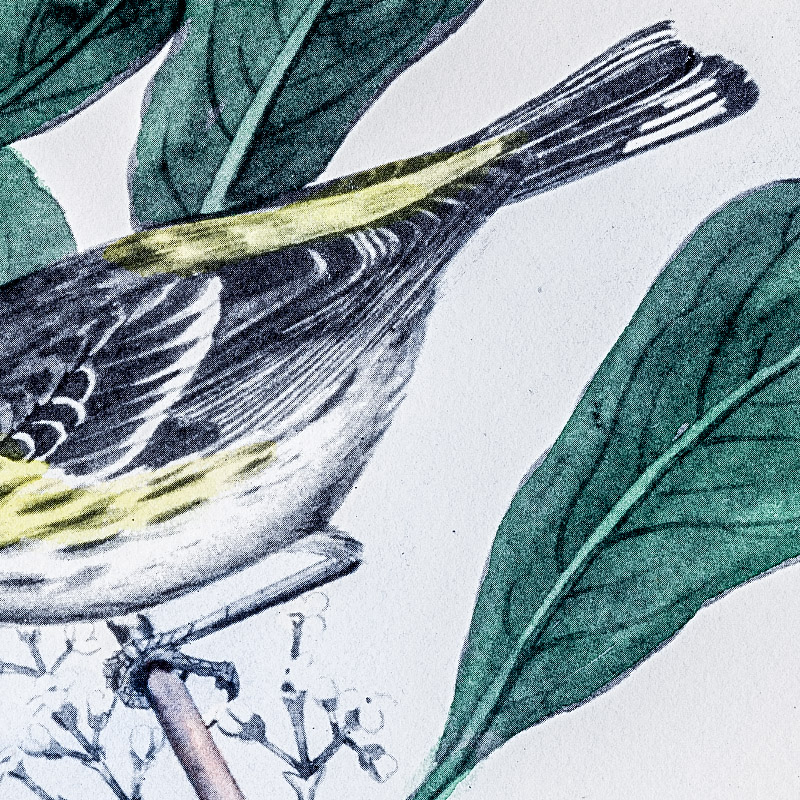
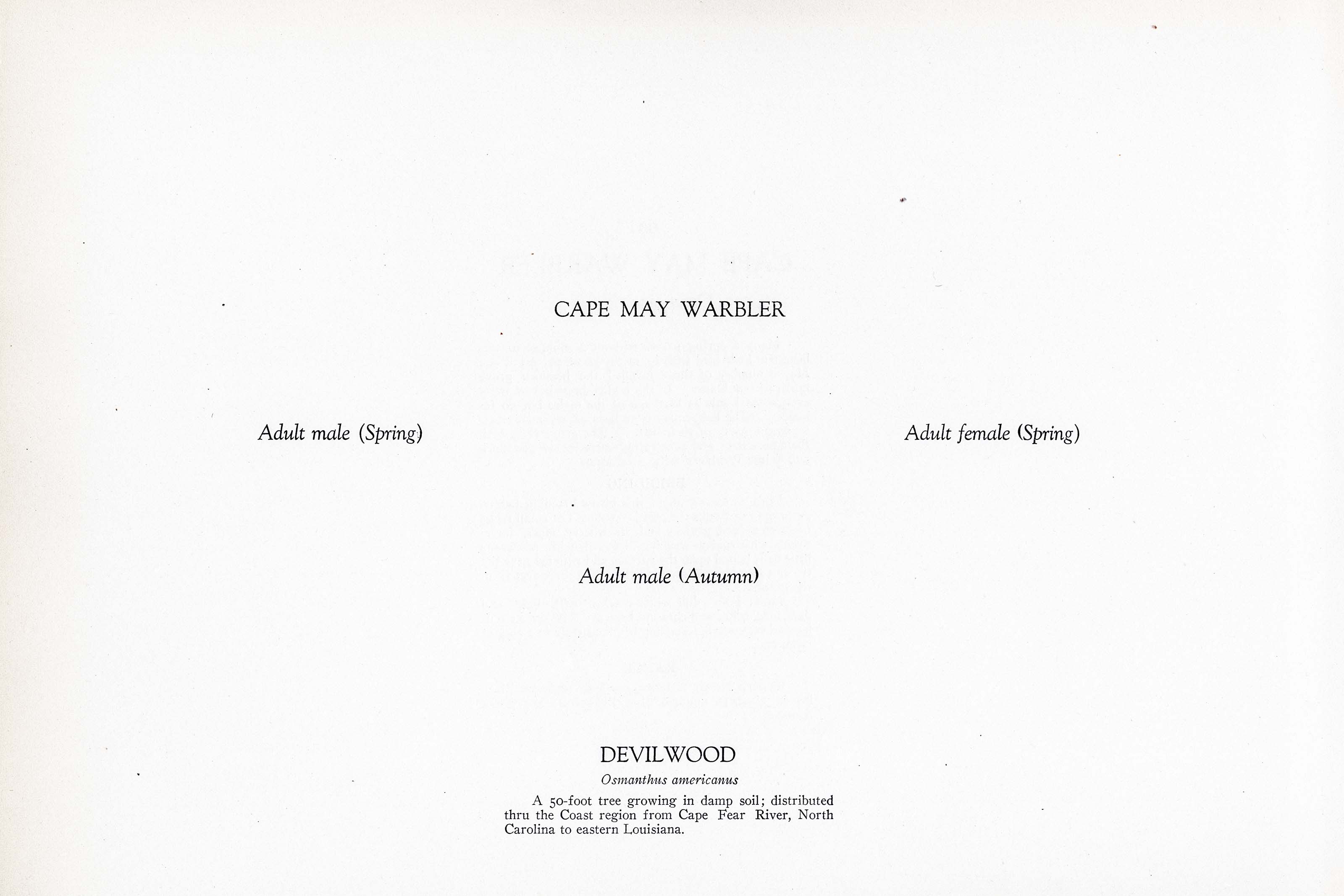
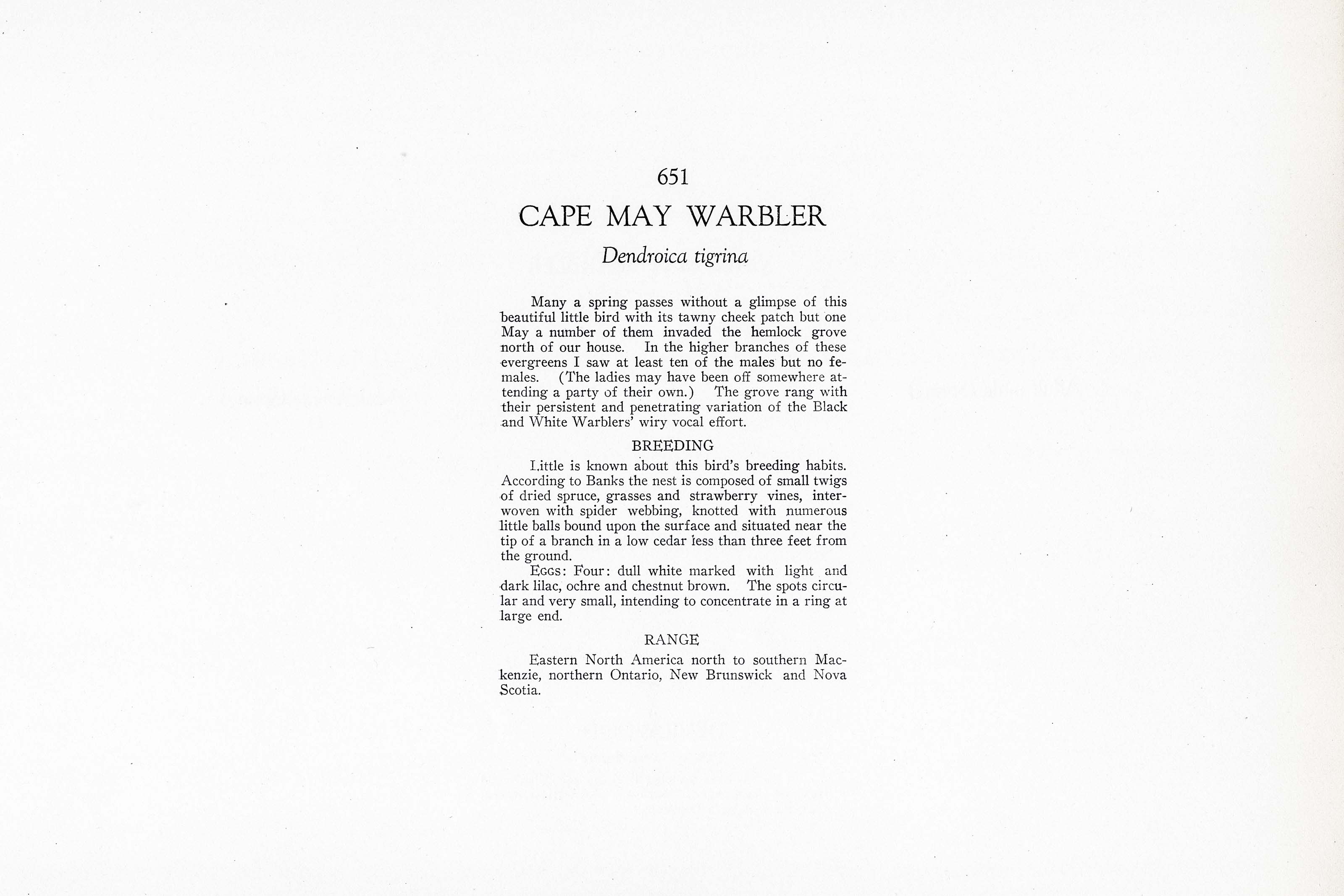

1912
1930
11
651
A team of dedicated board members, volunteers, and student interns has published every page in Volume 9. This volume includes 360 images of paintings and lyrical descriptions of birds, now available online for everyone to enjoy anywhere in the world. This is a monumental task. Each volume requires approximately 400 hours to photograph, edit, transcribe, catalog, and publish online. We need your support to complete this work.
If you're tech-savvy, have a good eye, are meticulous with details, and love structured data, please consider volunteering by emailing us at hello@rexbrasher.org.
We encourage all bird lovers and supporters to consider a monetary donation to support our mission to make Rex's work available for everyone. You can provide a one-time or recurring donation online.
Many a spring passes without a glimpse of this beautiful little bird with its tawny cheek patch but one May a number of them invaded the hemlock grove north of our house. In the higher branches of these evergreens I saw at least ten of the males but no females. (The ladies may have been off somewhere attending a party of their own.) The grove rang with their persistent and penetrating variation of the Black and White Warblers' wiry vocal effort.
Little is known about this bird's breeding habits. According to Banks the nest is composed of small twigs of dried spruce, grasses and strawberry vines, interwoven with spider webbing, knotted with numerous little balls bound upon the surface and situated near the tip of a branch in a low cedar less than three feet from the ground.
EGGS: Four: dull white marked with light and dark lilac, ochre and chestnut brown. The spots circular and very small, intending to concentrate in a ring at large end.
Eastern North America north to southern Mackenzie, northern Ontario, New Brunswick and Nova Scotia.
A 50-foot tree growing in damp soil; distributed thru the Coast region from Cape Fear River, North Carolina to eastern Louisiana.